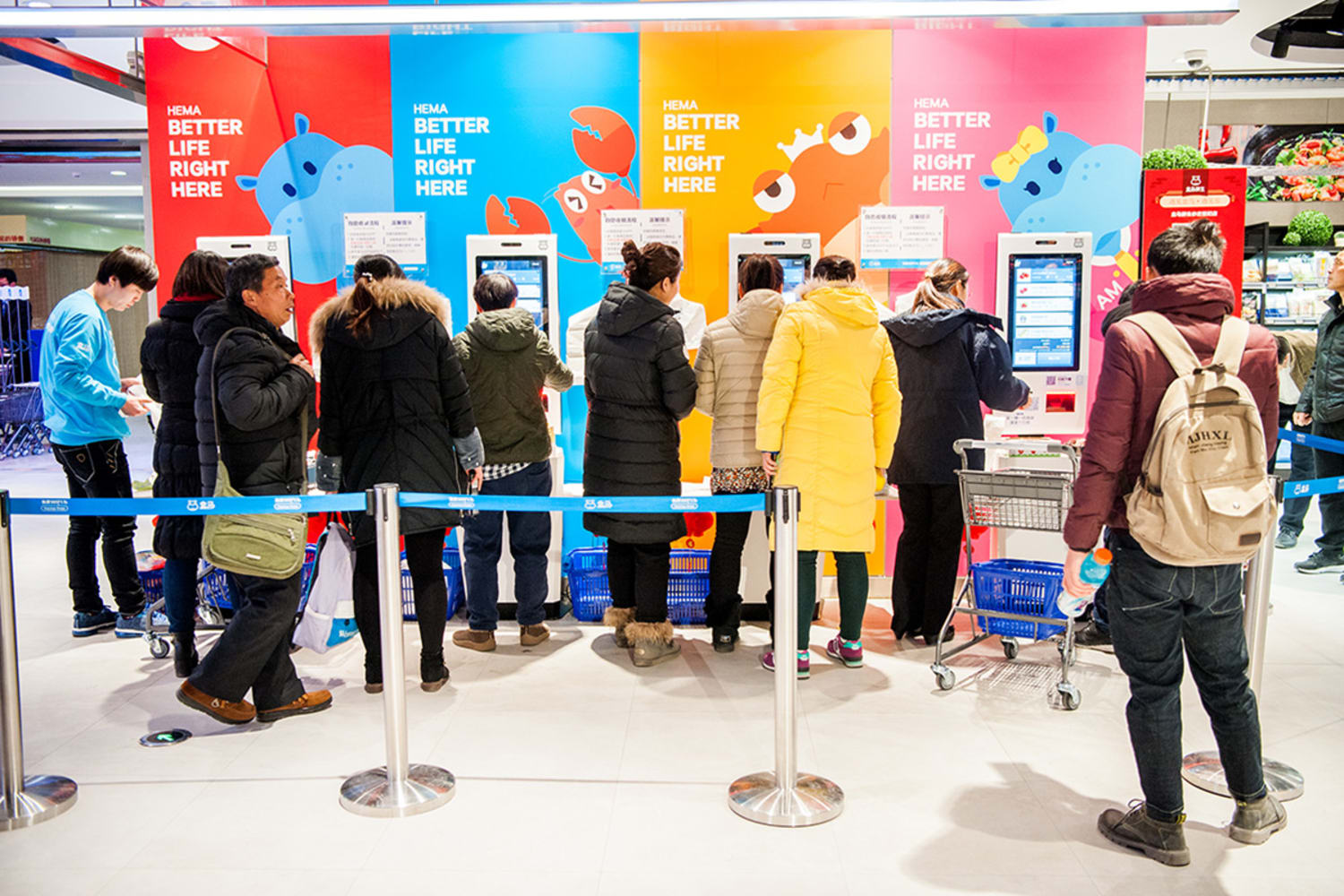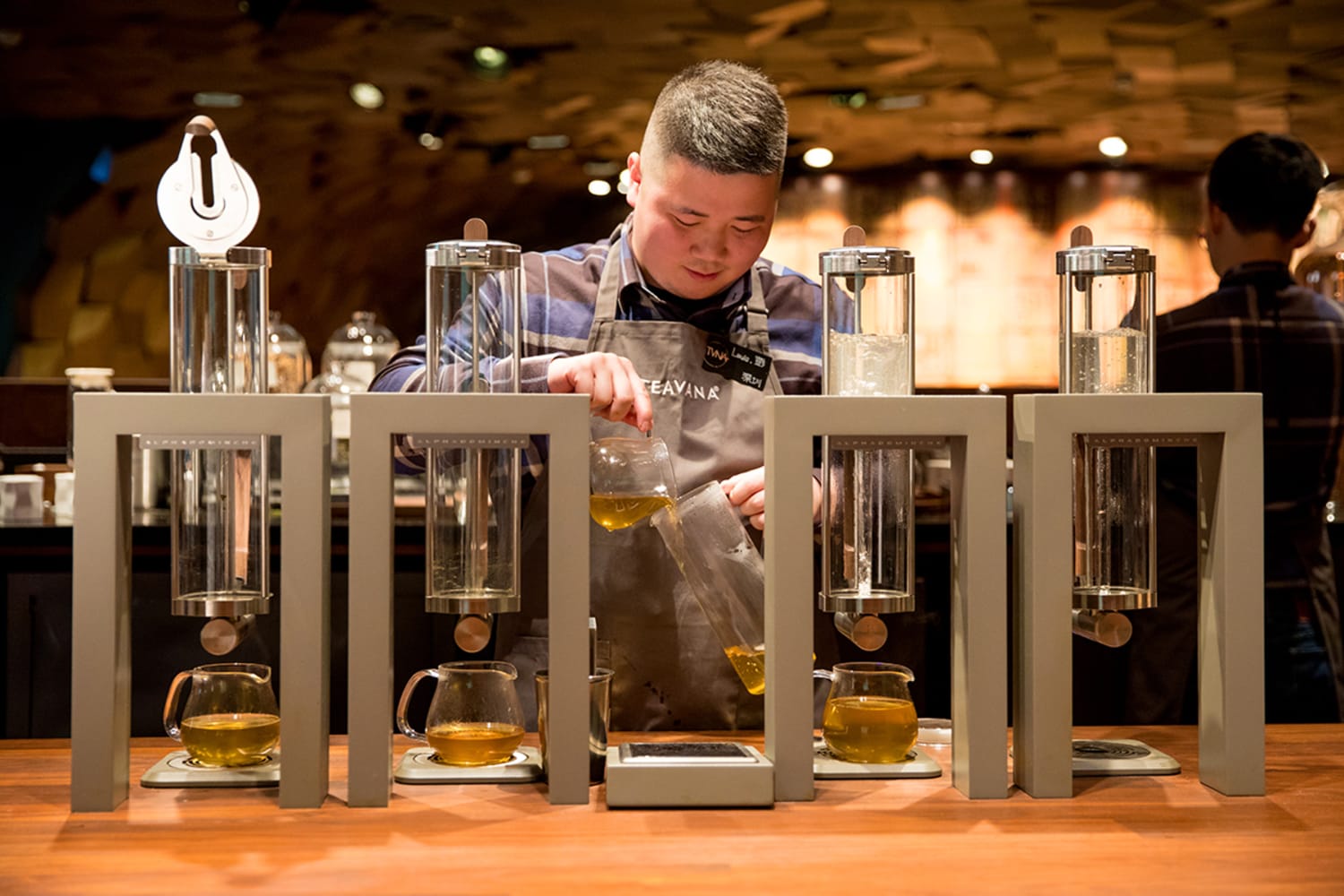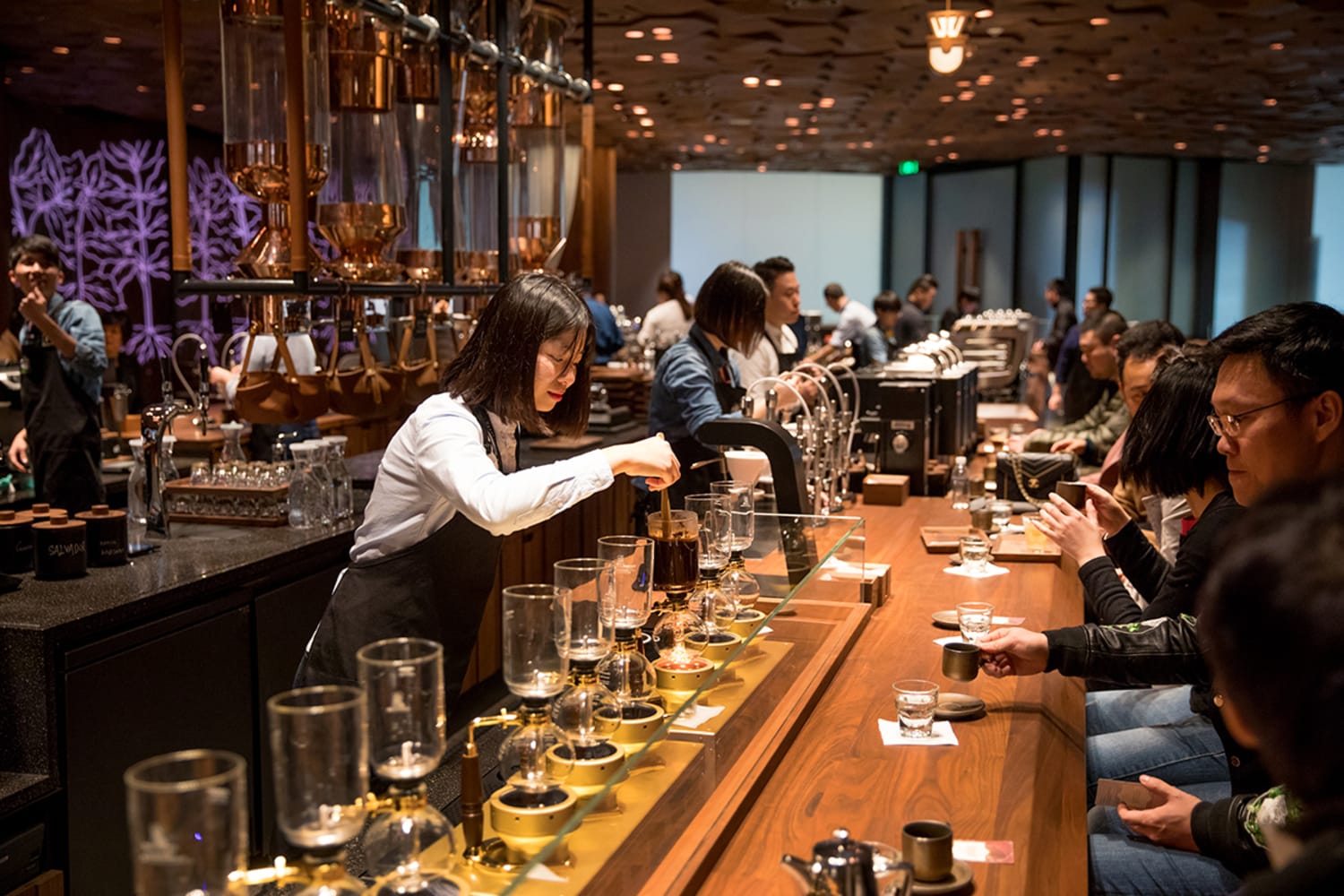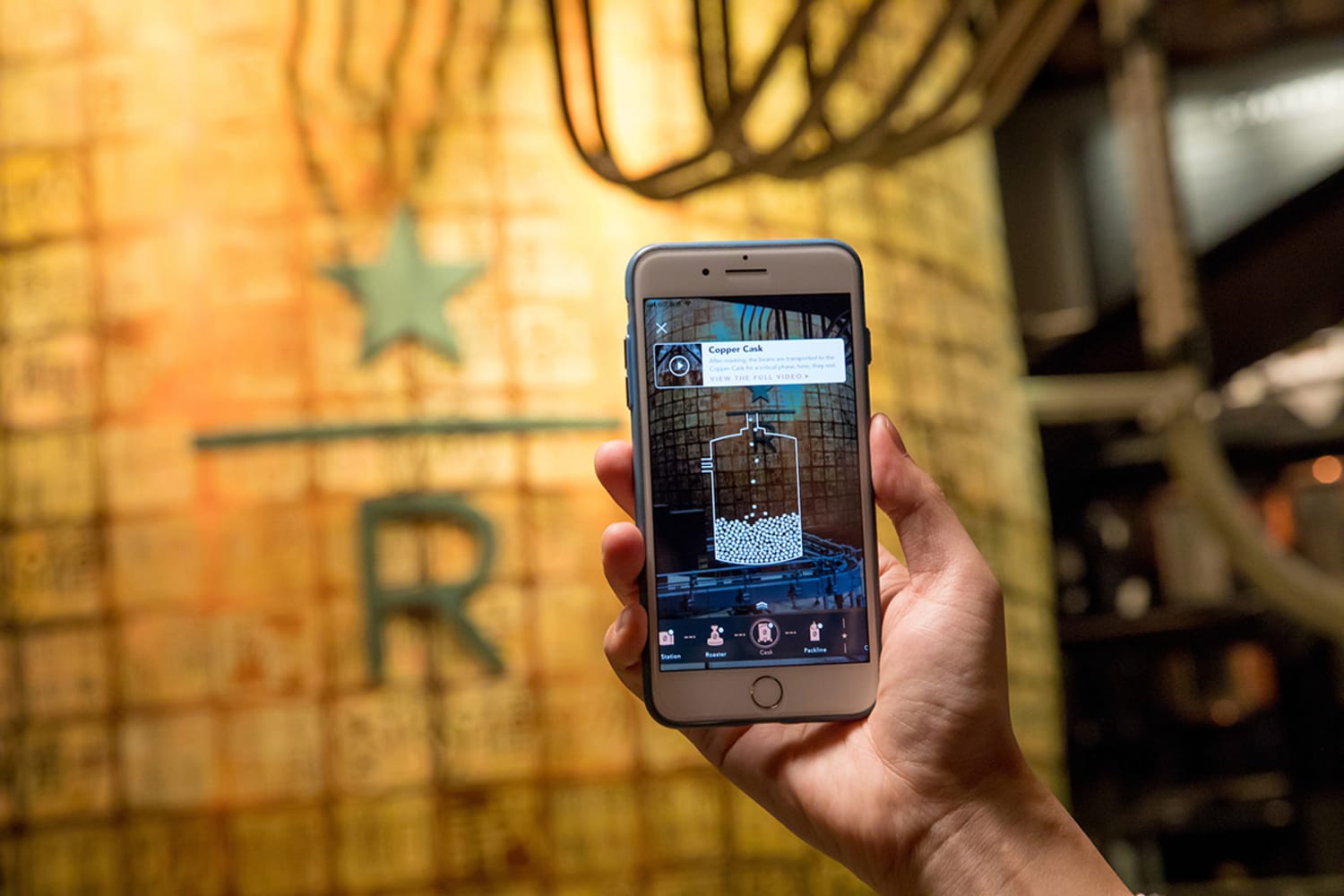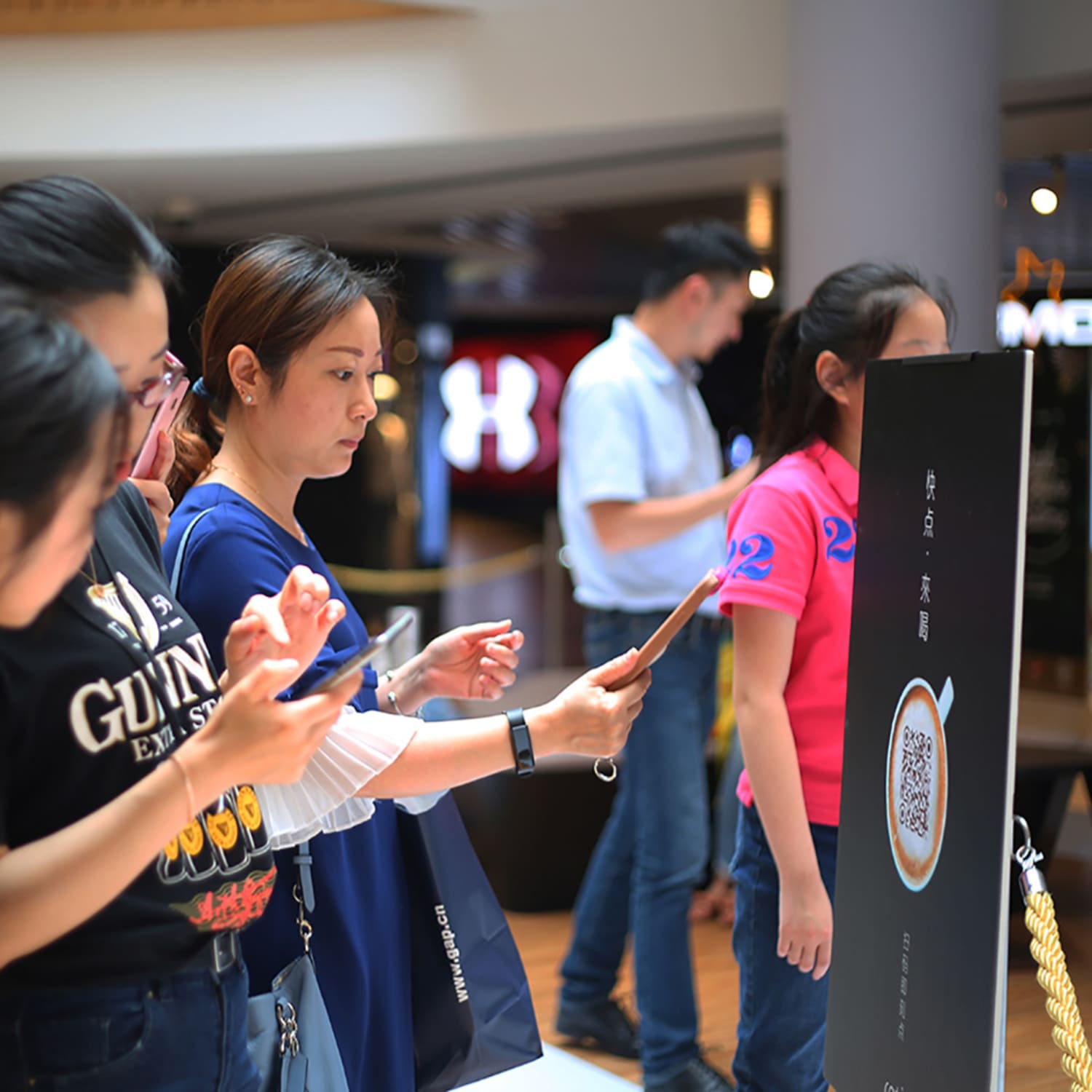Online ordering systems are nothing new, but, unlike the typical coffee shop, Luckin was completely designed around the concept. This “new retail” company has strategically opened its locations based on data that shows where customers are most likely going to want a coffee fast, such as near offices—that means nearly half of its outlets act solely as delivery hubs, promising a hot cup of joe delivered to the customer within a half hour. Other Luckin branches boast tables and chairs, but still don’t have menus, so customers are free to order on their app ahead of their arrival. The approach is similar to that of Alibaba’s Hema supermarkets, or Amazon’s collaboration with Whole Foods in the United States, both of which also follow the “new retail” model, which aims to sync the best of online and offline retail.
In contrast, Starbucks has been focusing more on offline customer experience, as café culture in China makes a notable shift from tea to coffee obsession. Last year, it opened its biggest outlet in the world, the Starbucks Reserve Roastery in Shanghai, before unveiling its second-largest flagshipthis summer in Beijing. But more recently Starbucks, under pressure from players like Luckin, has been ramping up its digital convenience for customers. It already has a major presence on WeChat and announced earlier this month that it would be launching a “new retail” partnership with Alibaba to offer online delivery.

